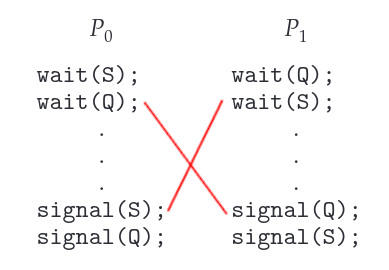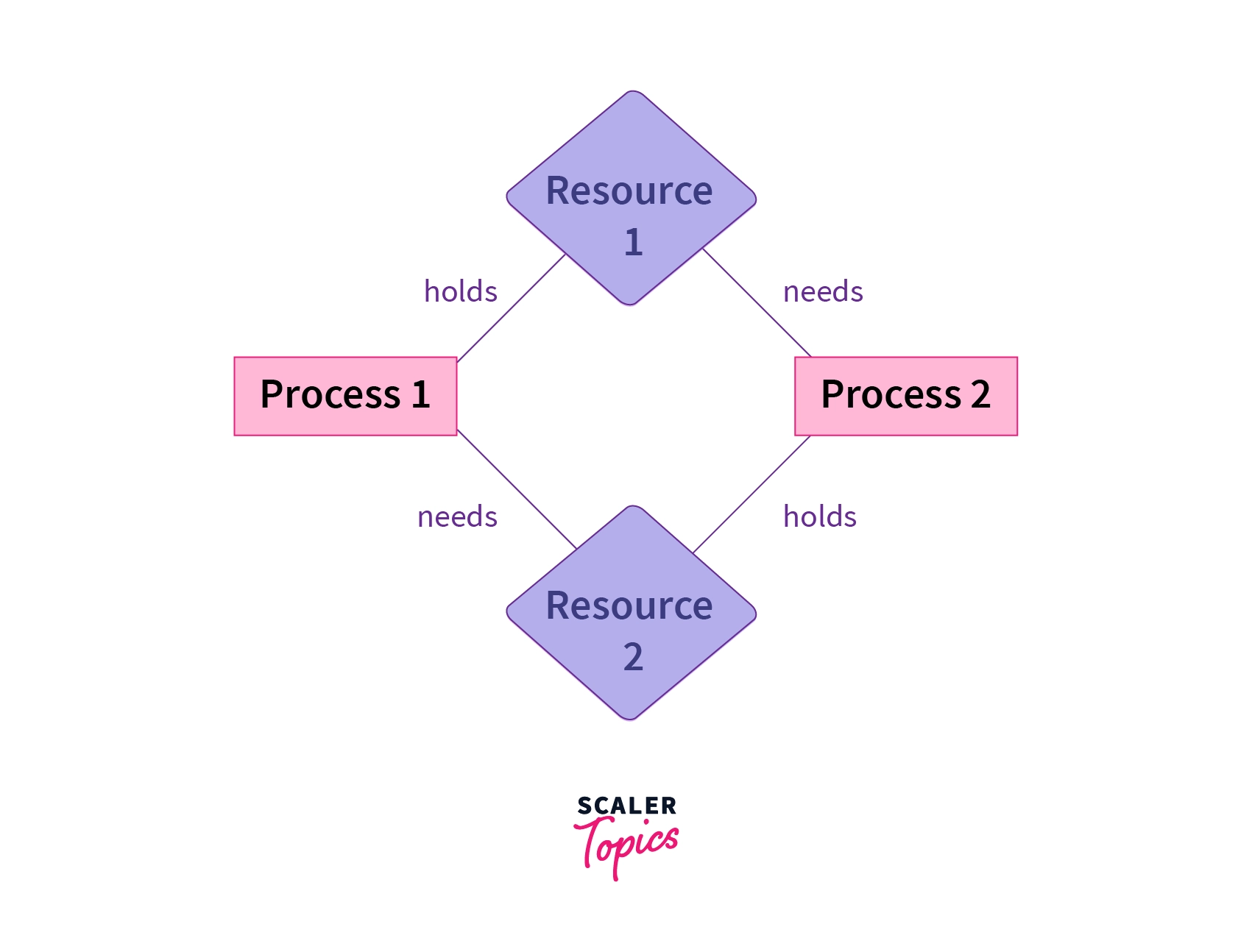Deadlock
The implementation of a semaphore with a waiting queue may result in a situation where two or more processes are waiting indefinitely for an event that can be caused only by one of the waiting processes.
When such a state is reached, these processes are said to be deadlocked.
Illustration
Consider two processes, P0 and P1, accessing the semaphores S and Q (set to the value 1):

If P0 executes wait(S) and P1 executes wait(Q), when P0 executes wait(Q), it must wait until P1 executes signal(Q). The same for when P1 tries to execute wait(S) and needs P0 to execute signal(S).
Remember that a semaphore cannot have its value < 0, that's why in our case, after wait() we must signal().
Since signal() cannot be executed, P0 and P1 are deadlocked.
We say that a set of processes is in a deadlocked state when every process in the set is waiting for an event that can be caused only by another process in the set.
